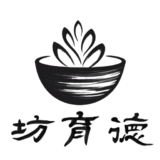Tao Te Ching: Chapter 12 Five Colors Five Sounds Five Tastes
November 19, 2024 2024-11-19 10:21Tao Te Ching: Chapter 12 Five Colors Five Sounds Five Tastes

Tao Te Ching: Chapter 12 Five Colors Five Sounds Five Tastes
Tao Te Ching: Chapter 12 Five Colors Five Sounds Five Tastes
Finding Balance Through the Dao De Jing: Lessons from Chapter 12
In Chapter 12 of the Dao De Jing, Laozi shares a profound truth:
“The five colors make one blind, the five sounds make one deaf, and the five tastes dull the palate.”
At first glance, this might seem puzzling. Why focus on “five” colors, sounds, and tastes? Why this specific number? To understand, we need to look deeper into the ancient Chinese worldview.
The Connection to the Five Elements
The number five corresponds to the five elements: wood, fire, earth, metal, and water. These elements represent the fundamental forces of nature and the cycles of life. In their correct sequence—wood, fire, earth, metal, and water—they form a harmonious and continuous cycle. But what does this have to do with colors, sounds, and tastes?
The Principle of Imbalance
The teaching warns us about overindulgence. Let’s explore this idea:
- Colors: If you fixate on one color, such as red, and ignore others, it can lead to an imbalance in your energy. You become so absorbed that you lose sensitivity to the vibrancy of other hues.
- Sounds: Immersing yourself exclusively in one type of music or sound can have a similar effect. Each sound resonates with our internal organs, so limiting your auditory experience can disrupt the balance within.
- Tastes: Overindulging in a specific taste, like spiciness, dulls your palate over time. It becomes harder to appreciate the subtle flavors of other foods.
The Path to Balance
Is there a way to regain harmony? According to the Dao, there is.
- The most balanced color is the absence of color. It is the state of “no color,” where no single hue dominates.
- The most harmonious sound is silence. In silence, all sounds are present in their potential form, creating perfect balance.
- The most balanced taste is tastelessness. By experiencing neutrality, we can appreciate the natural essence of every flavor.
When we embrace “no color,” “no sound,” and “no taste,” we sharpen our perception of the world.
Practical Wisdom
- Visual clarity: By stepping back from overstimulation, we can notice how different colors affect our emotions and energy.
- Auditory sensitivity: With quiet reflection, we discern which sounds uplift us and which disrupt our inner harmony.
- Refined taste: By avoiding extremes, we rediscover the authentic flavors of food, without craving overly sweet, spicy, or artificial tastes.
A Gentle Reminder
The Dao teaches us to live in harmony with the world around us. When we cultivate balance in our senses, we also nurture balance within ourselves.
Thank you for reading! If this resonated with you, feel free to like, share, and recommend it to others. Let’s spread the wisdom of the Dao together.
五色令人目盲 五音令人耳聋 五味令人口爽
在《道德经》第十二章中,老子提出了一个耐人寻味的观点:
“五色令人目盲,五音令人耳聋,五味令人口爽。”
乍一看,这句话似乎难以理解。为什么老子要特别提到“五”色、五音和五味?为什么是这个数字呢?要解开这个谜题,我们需要深入了解古代中国的宇宙观。
五行与自然的联系
“五”与五行密切相关,即金、木、水、火、土。这五种元素象征着自然界的基本力量和生命的循环。按照正确的顺序——木生火,火生土,土生金,金生水,水生木——它们形成了一个和谐的循环。然而,这与颜色、声音和味道有什么关系呢?
失衡的原理
这段话提醒我们不要过度沉迷于任何一种感官体验。以下是一些例子:
- 颜色:如果你过分迷恋一种颜色,比如红色,而忽略了其他颜色,就会导致能量失衡。你的眼睛会变得对其他色彩不敏感,无法感知它们的美。
- 声音:如果你沉迷于某种类型的音乐或声音而忽视其他声音,内心的平衡也会被打破。因为每一种声音都会影响我们的内脏和情绪。
- 味道:如果你过度追求某种味道,比如辛辣,长此以往,你的味觉会逐渐对其他食物的细腻滋味失去感知能力。
寻找平衡的方法
如何才能恢复平衡呢?在《道》中,答案是回归到“无”。
- 最平衡的颜色 是“无色”。它不偏向任何一种颜色,包含了一切的可能性。
- 最和谐的声音 是“无声”。寂静中蕴含着所有声音的潜力,达到了完美的平衡。
- 最平衡的味道 是“无味”。通过体验味觉的中性状态,我们能够品味每种食物的本质。
当我们能够安住于“无色”、“无声”、“无味”之中时,我们感知世界的能力会变得异常敏锐。
实践智慧
- 视觉平衡:减少感官过度刺激,我们能更清晰地看到每种颜色对情绪和能量的影响。
- 听觉敏锐:通过静默,我们能辨别出哪些声音对我们有积极作用,哪些声音会扰乱我们的内心平静。
- 味觉纯净:避免极端口味的诱惑,我们能够重新发现食物的原汁原味,而不是过度追求甜腻或辛辣的感官刺激。
温馨提示
《道》告诉我们,生活需要平衡。当我们在感官上找到平衡,内心的世界也会更加和谐。
感谢阅读!如果这篇文章触动了你,请点赞、分享或推荐给身边的朋友。让我们一起传播《道》的智慧!









